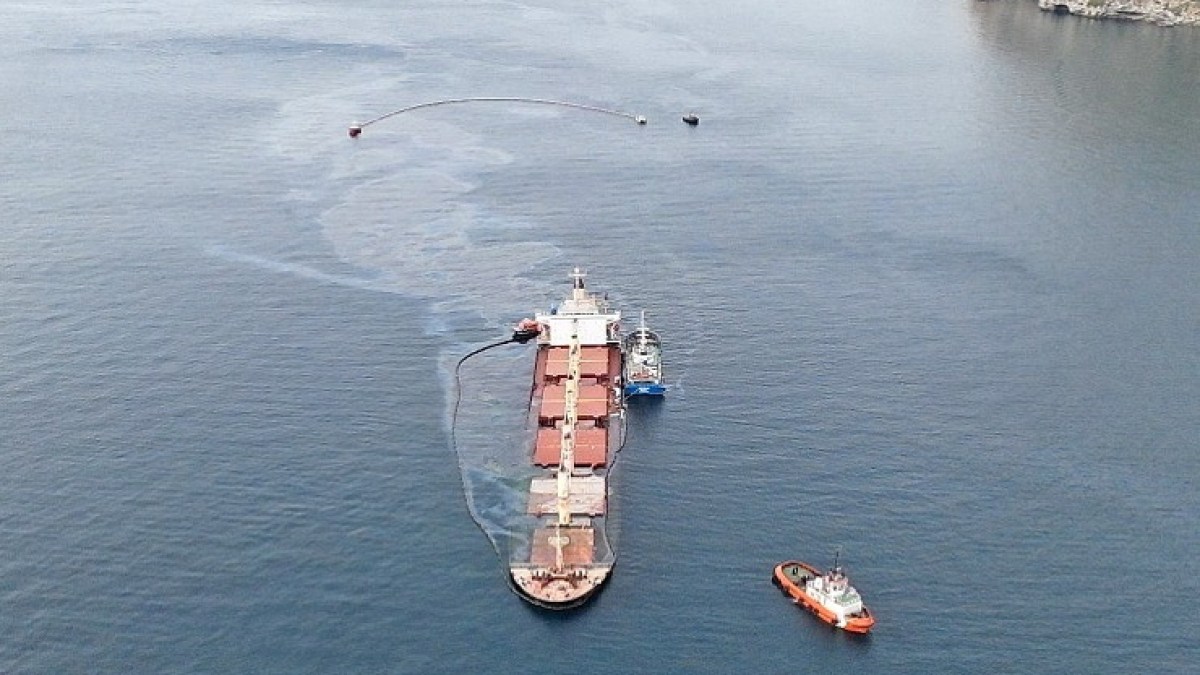On Friday, Gibraltar authorities tried to limit the environmental impact of a fuel leak from a cargo tanker, 3 days after it collided with a liquefied natural gas tanker, with reports of the appearance of birds contaminated with fuel, while several beaches in Spain and the British region raised red flags.
The government in Gibraltar, a region on the southern tip of Spain, said all diesel fuel from the ship's OS 35 tanks had been removed.
The authorities had begun the day before yesterday, Thursday, the extraction of heavy fuel oil from the ship, whose hull was destroyed on Thursday night.
Drone footage showed an oil slick extending its way past the bubble that formed next to the ship, but authorities said the leak was greatly reduced with only a visible sheen in the bubble and not clumps of black oil as it had been on Thursday.
The scraping operations inside the bubble removed about 12 tons of a mixture of oil and water, and the local government also deployed cleaning teams to remove oil from the coastline, and said - in a statement - that "there is close and constant monitoring of the situation" and that it is making every effort to reduce the harmful effects. on wildlife.
She added that she had "received reports of small numbers of birds contaminated with the fuel."
The stranded ship "OS 35" was carrying a cargo of steel bars and more than 400 tons of fuel when it collided with the LNG tanker last Tuesday, as the heavy fuel oil began to leak into the sea.
The Spanish authorities prevented swimming in one of the beaches of the region after an oil slick reached it, noting that it would monitor the swimming water in the coming days until any threat to public health ends.

